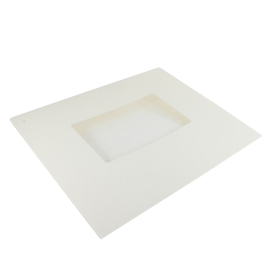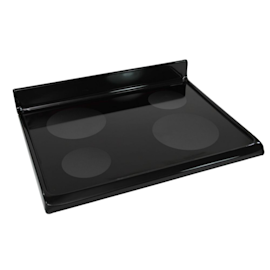Are DIY appliance repairs safe?


In most situations, you can safely replace broken parts to fix appliances yourself as long as you unplug the appliance or shut off the house circuit breaker to disconnect electrical power before beginning diagnosis and repair.
Exceptions do exist. Microwave and some electronics repairs aren’t safe because these products often contain capacitors that can retain a lethal electrical charge even when you unplug the power cord (or shut off the house circuit breaker to disconnect electrical power). Always have a service tech repair a microwave or replace the microwave instead of having it repaired.
Anytime you attempt a DIY appliance repair, you’re taking a safety risk. The magnitude of the safety risk depends on your ability to follow strict safety guidelines such as disconnecting electrical power before beginning diagnosis and repair.
What are DIY appliance repair guidelines?
The number one safety guideline for DIY appliance repair is to unplug the appliance or shut off the house circuit breaker before beginning any diagnosis or repair. You won’t be electrocuted if power is disconnected when diagnosing and repairing most appliances.
Exceptions do exist for this rule. Microwaves and some electronics such as TV’s contain capacitors that can retain a lethal electrical charge even when the appliance is unplugged or the house circuit breaker for the appliance is shut off.
If you’re ever in doubt as to whether an appliance repair is safe, don’t risk injury to yourself or your family, schedule a Sears Technician to visit your home and repair your appliance.
If you’re confident in your ability to safely diagnose and repair basic appliance failures yourself, follow these additional safety guidelines to prevent accidents and injuries:
Always wear proper safety equipment. Safety gloves are essential when diagnosing and repair appliances. Internal metal edges in appliances are razor sharp. Prevent cuts by always wearing protective gloves when working on appliances. When you’re unable to unplug an appliance to disconnect electrical power, the best gloves to use for DIY appliance repairs are rubber electrical gloves that insulate your hands from electrical current unless you’re able to verify with certainty that power is disconnected from the appliance through the house circuit breaker. Tag the breaker with a note so nobody resets the circuit breaker while you’re working on the appliance. You should also wear eye protection when repairing appliances. Safety goggles prevent debris from injuring your eyes.
Disconnect electrical power and shut off the gas supply. Unplug the appliance or shut off the house circuit breaker for the appliance before beginning disassembly and repair. Unplugging the appliance is the best method for disconnecting power. When you shut off the house circuit breaker to disconnect power, verify that power is disconnected from the appliance by trying to power it up or looking at the display to make sure the appliance is completely dead. When you’re not able to verify that power is shut off to the appliance, wear insulated rubber electrical gloves to isolate your hands from electrical current in case you shut off the wrong breaker and the appliance still has power connected. Shut off the gas supply to gas appliances before beginning any diagnosis and repair.
Research the repair. Always familiarize yourself with a repair before beginning. You can get safe, dependable DIY repair tips and advice on our Sears PartsDirect website. We provide diagnostic and repair procedures for many common appliances in our Repair Help section and on our Sears PartsDirect YouTube channel. Being familiar with how to complete a repair the right way is essential to your safety. We recommend that you only use repair advice from established, reputable sources such as Sears PartsDirect. Using advice from an unreliable source can be dangerous.
Look for springs or hinges under tension. When you disassemble an appliance, springs or hinges can release and cause injury if not disconnected properly. Be safe. Have a service technician repair an appliance if you're not able to release a spring or hinge properly.
Reassemble the appliance properly. Use your phone to take pictures of how wires are connected before pulling them off during a repair. Never neglect to reconnect the ground wire when present. The ground wire is usually green in color—it helps protect you from electrocution if a short occurs inside the appliance. Reconnecting all wires properly is key to DIY appliance repair safety. Also, reassemble the appliance completely and make sure all fasteners are tightened properly before restoring power and using the appliance. If you’re ever unsure about whether the appliance is reassembled properly or you’re unable to reassemble the appliance yourself, schedule a Sears Technician to complete the repair.
Use the right part. Only use OEM (original equipment manufacturer) parts to replace broken or worn appliance parts. Don’t use after-market parts or parts that aren’t valid substitutes authorized by the manufacturer for the appliance. Use the full model number of your appliance to look up the correct replacement part for your appliance. If you’re unsure about which part fits your appliance, use the Chat feature of your Sears PartsDirect website or call a Sears PartsDirect parts agent for help.
Beware of capacitors. Capacitors are electrical components that store an electrical charge. They send current to motor windings and other components during appliance operations. If a repair involves exposure to a capacitor, your safest course of action is to schedule a Sears Technician to complete the repair. A capacitor needs to be properly discharged to prevent electrocution when accessing internal components and repairing an appliance. If you’re unsure whether your appliance has a capacitor, have a Sears Tech repair the appliance to ensure your personal safety.
When should I have a technician repair my appliance?
Although you can save lots of money repairing your appliances yourself, some repairs (such as microwave repairs) should only be completed by a service technician. Also, any repairs to a refrigeration appliance that involves the recovery and recharge of refrigerant must also be completed by a technician. Only a tech licensed to recover and recharge refrigerant can work on refrigeration appliance sealed systems.
Gas appliance repairs that involve disconnection of gas lines should also be performed by a service technician. Gas lines must be properly reconnected, sealed and leak-tested by a technician to avoid dangerous gas leaks that can cause an explosion.
Always make safety your top priority when considering a DIY appliance repair. Don’t risk safety to save time and money when an appliance needs repair. When in doubt, schedule a Sears Technician to diagnose and repair an appliance failure.
Symptoms for electric ranges
Main causes: faulty surface element, burner control switch failure, temperature limiter not working properly, loose wiri…
Main causes: impact from dropping an item on the glass surface, ceramic glass surface flaw, surface element temperature …
Repair guides for electric ranges

How to replace a range hidden bake element
These step-by-step instructions guide you through replacing the oven hidden bake element in an electric range.…

How to replace an electric range oven door outer glass panel
Learn how to replace a damaged outer window panel on your oven door with these step-by-step instructions. …

How to replace a range glass cooktop
These step-by-step instructions explain how to replace a damaged ceramic glass cooktop on an electric range. …
Articles and videos for electric ranges

Learn about the differences between cooking on gas and electric stoves.…

Learn how to troubleshoot a coil surface element on your stove that won't heat.…

This short, animated video shows you why the hot surface light on your range always stays on—and how to fix it.…